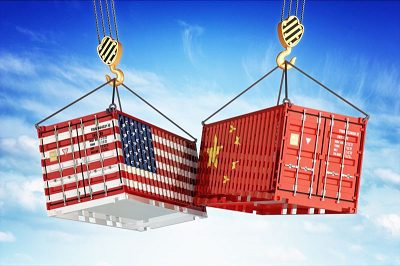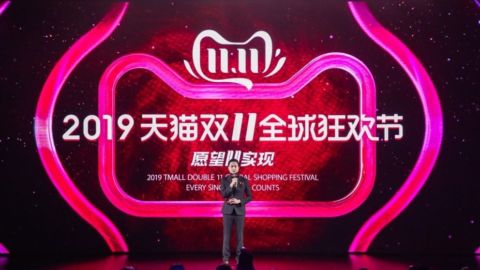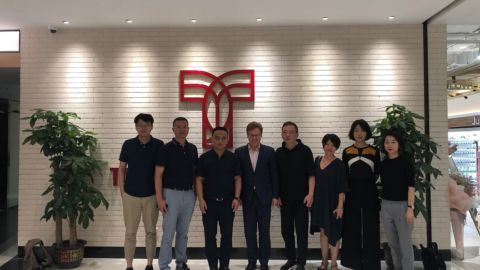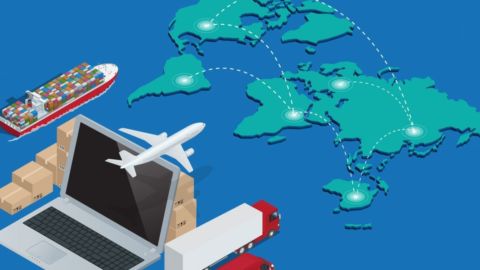Tariffs on Chinese-made goods already are increasing prices on apparel and footwear imports, and the impact will be even more damaging when tariff rates jump from 10% to 25% in 2019. The National Retail Federation (NRF) and other industry groups have stated that the tariffs harm both U.S. consumers and workers, but it seems that retailers and manufacturers will need to adjust to these additional costs.
During the Sourcing Journal Summit held Oct. 11 in New York City, a group of sourcing industry experts responded to the fact that they see little chance of either the U.S. or China backing down any time soon.
A prolonged trade war between the world’s two largest economies represents a major challenge for retailers, manufacturers and consumers. In the short term, increased sourcing and supply chain costs will lead to lower margins, higher prices or both. In the longer term, U.S. companies will need to ramp up with suppliers in countries that are not subject to tariffs. But it’s not so easy to shift supply chains that have been built up over many years. Additionally, apparel and related products make up a significant portion of U.S. imports, and China represents the world’s largest manufacturing base for these items.
“Footwear, apparel, accessories and fabric together account for 55% of all duties collected, so how could it not have an impact to add another 10% to 15% to these costs?” asked Maristella Iacobello, VP of Customs Compliance and Government Relations for global apparel firm PVH. Iacobella was part of a panel discussion titled “How To Avoid Becoming Collateral Damage In The Trade War.”
“China represents 35% of all exported apparel globally, and the next eight countries on the list together equal 35%,” said Robert Sinclair, President of Global Supply Chain for Global Brands Group, an international footwear manufacturer. “China had been getting more expensive, and we had been working to mitigate those costs with a number of companies, but the prospect of 25% tariffs in 2019 will force everyone to look at alternative ways to meet their needs.
“It’s not like there’s an unlimited amount of manufacturing capacity in countries like Bangladesh and India,” Sinclair added. Alternatives to China such as nearshoring — sourcing products from NAFTA countries or other non-Asia regions — and onshoring, i.e. using U.S. manufacturers, is an option, but questions remain as to whether “they will be enough to offset the costs that will hit us,” he said.
“Ultimately these tariffs are going to fundamentally transform supply chain solutions and strategies,” said Sinclair. “There is likely to be an exit for American brands from Chinese manufacturing, and it could potentially allow other countries to take its place. We would like to see companies in Africa, Australia and elsewhere take advantage of these opportunities.
“Tariffs or no tariffs, dependence on a single source country is not a good strategy,” Sinclair added.
Many Tariff Impacts Have Been Hidden — So Far
While tariffs on raw materials such as steel and aluminum have grabbed headlines, the effects have been less obvious in the apparel industry. “I have seen tariffs affect companies that I work with both directly and indirectly,” said Nicole Bivens Collinson, President of International Trade and Government Relations for Sandler, Travis & Rosenberg, a law firm specializing in trade and customs. “If you’re involved with footwear, bags or backpacks, those were covered in the last tranche,” said Collinson. However, tariffs on items such as hangers, plastics, inserts and plastic bags to wrap clothing have created “a hidden cost underneath,” she noted.
Panelists were pessimistic about a quick end to these trade conflicts, even if the political leadership in the U.S. changes. Retailers hoping that a new administration would be willing to roll back tariffs, which essentially operate as a tax paid by them and their customers, are likely to be disappointed. That translates to a long-term change in product cost structures, at least until alternative sources are found and onboarded.
“I believe both China and the U.S. don’t see how they can back down,” said Collinson, “We could be stuck in this for 20 years. As a political candidate, how are you going to sell [reducing tariffs] if the Chinese are attacking U.S. companies by, for example, stealing intellectual property? Additionally, the Chinese are masters of putting up non-tariff barriers. If you’re trying to do manufacturing there, they can make your life hell with things like licenses and certifications.”
Another complication is that “no one really knows what the U.S.’s strategy is,” said Sinclair. “Tariffs are a disruptive tactic, but what’s the bigger agenda?” While the last 20 to 30 years of China policy has been about greater engagement, Sinclair sees “a different perspective as to how this administration is looking at China.”
There is good reason to be suspicious of China’s global ambitions: “There’s One Belt One Road, a trade bloc that China is initiating with 68 countries that addresses 65% of the world’s population and 40% of its GDP,” said Sinclair. “Additionally, there are Africa initiatives stemming from China’s paying for infrastructure projects there for the last 20 years. China is also looking to build naval bases in the South China Sea, and there is the Made In China 2025 initiative, which seeks to upgrade China’s own manufacturing. The geopolitical ramifications of a lot of these initiatives are raising eyebrows.”













